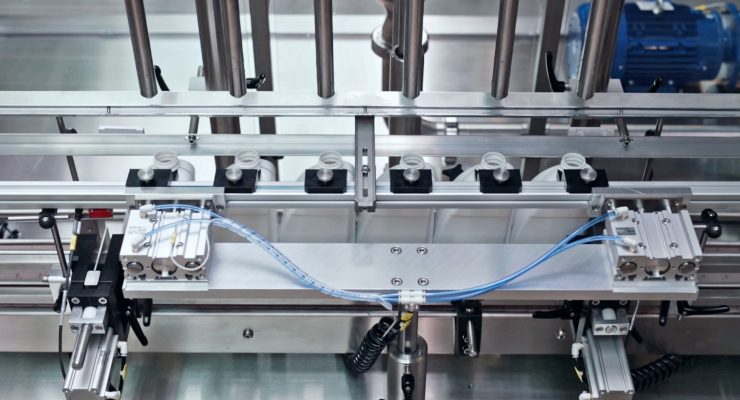Why Machine Design Matters: Material Compatibility
Posted
Why Machine Design Matters: Material Compatibility
When designing a filling machine, one critical factor often underestimated is material compatibility—specifically, the compatibility between the machine’s fluid-contact parts and the fluids being filled.
Ensuring proper material compatibility is essential for three reasons:
- Durability – extending the lifespan of the machine,
- Cleanability – making it easier to maintain hygienic conditions,
- Product Integrity – preventing contamination or alteration of the fluid being filled.
Fluid-Contact Components
The fluid-contact parts of a filling machine include both rigid components and sealing materials. Common components are:
- Bulk tanks
- Pumps
- Metering units
- Flowmeters
- Hoses
- Filling nozzles
In addition, seals—used in connections and valves—must also be compatible with the fluid.
Even parts that aren’t meant to contact fluid directly, such as external housings or frames, should be considered, as splashing or accidental contact is always a possibility.
Common Material Choices
Stainless steel, particularly grades like 316, is a common choice for fluid-contact components due to its corrosion resistance, hygienic properties, and compatibility with a wide range of fluids.
For seals, PTFE (Teflon) is a popular option because of its broad chemical resistance. However, in many cases, elastomeric seals are required, and the choice of elastomer (e.g., EPDM, Viton, Nitrile) must be tailored to the specific fluid being filled to ensure long-term performance.
Risks of Incompatibility
Material incompatibility can lead to two major issues:
1. Damage to Machine Parts
- Chemical attack on seals can cause leakage, dripping, and inconsistent dosing.
- Corrosion of metal parts (especially when pitting occurs) can make cleaning difficult and compromise hygiene.
- Degradation of plastic parts can result in stress cracking or even structural failure.
2. Contamination of the Fluid
- Incompatible seals may become brittle, shed fragments, and introduce foreign particles into the product.
- Chemical reactions can alter the properties of the fluid being. For instance, some aggressive chemicals can absorb salts from ferrous metals, altering their composition.
Best Practices
The widely accepted approach is to specify filling machines with 316 stainless steel for fluid-contact parts and to carefully match seal and hose materials to the chemical properties of the fluids. This ensures optimal performance, safety, and longevity.
However, it’s worth noting that not all fluids are compatible with stainless steel. For example, caustic solutions with high alkalinity (e.g. bleaches) can degrade the passive oxide layer on stainless steel, leading to surface corrosion. In such cases, alternative materials—such as high-grade plastics (e.g., PTFE)—may be more suitable for fluid-contact parts.
Conclusion
Material compatibility is a significant factor in effective machine design. Choosing the right materials for both components and seals ensures equipment longevity, maintains fluid integrity, and reduces the risk of contamination or failure. Taking compatibility seriously is key to delivering safe and reliable performance.

